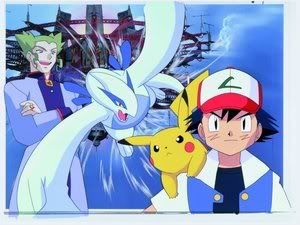The first chapter of Susan Napier's book raises some interesting points about anime as a cultural phenomina and how it has managed to stretch to places that it may not have been expected to. I agree that anime's popularity outside of Japan has lead to a revival and expansion of the American animation industry, but the fact that every time Napier mentions of American animation seem to call it “predictable”, only point out it's flaws and seems to look down on it bothers me. This book is not so old that it can ignore American animated shows like “Avatar: The Last Airbender”, “My Life As A Teenage Robot”, “Samurai Jack”, and even “Futurama” and “The Venture Bros.”.

Yes, these shows were very obviously anime influenced, but they are not anime, and deserve credit for what they are – Attempts to increase the audience of American animation. Especially shows like “Futurama” and “the Venture Bros.” which draw minimally on anime and are more influenced by other sources. The same goes for her treatment of American animated films, which have made incredible advancements in catering to older audiences. It is because of these things, which are influenced by anime, that Western Animation is truly capable of advancing, and looking down on it is only making her seem elitist and difficult to read.
Her talk about the “modes” of anime also bothers me quite a bit. Yes these things exist, but I do not think that different anime fall into one or the other, or even switch between them within a series as she seems to imply. I firmly believe that all three, as well as other “modes” (which I would prefer to apply the term 'emotion' to, since 'mode' implies that only one at a time can happen) can not only exist simultaneously, but happen simultaneously more often than they do individually. To try and break things down into one piece at a time can strongly devalue how the other pieces play into a specific moment. Specific examples of my point can be found in episodes 9 through 11 of “Tengen Toppa Gurren Lagann”, the first two “Pokemon” films, and throughout the anime series “Baccano!” and "Magic Knight Rayearth. (I have offered to write a second essay elaborating on this point. We'll see if that happens.)

McCloud, much more tolerably, acknowledges comics as a whole and simply points out differences between western comics and manga, and their influences on one another (Not just one side to the other!) without devaluing either side. He focuses not only on America and Japan and how they have seeped into other cultures, but on the fact that other cultures have their own comics and sequential illustrations and that those have also influenced America and Japan. In fact, he gives much credit for the birth of comics to Europe.
Though I suppose since McCloud's book is on comics as a whole and Napir is focusing specifically on anime (and by association, manga), I guess it is to be expected that she is not going on about Europe in the 1700's. Still, I feel that Napir is over-analyzing anime and manga and putting it above other forms of comics and animation, while McCloud is simply taking the things we all know about comics, making it easier to understand and talk about, and then expanding on it.
I'm going to hopefully keep posting my weekly class responses here, but it really depends on if I find my responses interesting enough. Hopefully my teacher will want me to write the essay I offered on elaborating points about the "modes" Napier mentions, because I can basically rip that to shreds and that might be interesting.